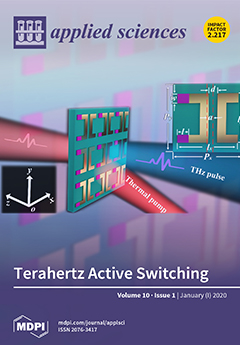Water shortage threatens agricultural sustainability in Horqin Sandy Land, northeast China. To explore the effects of various surface mulching patterns with micro-spray irrigation on the yield, water consumption (ET
c), and water-saving potential of maize (
Zea mays L.), we used three
[...] Read more.
Water shortage threatens agricultural sustainability in Horqin Sandy Land, northeast China. To explore the effects of various surface mulching patterns with micro-spray irrigation on the yield, water consumption (ET
c), and water-saving potential of maize (
Zea mays L.), we used three treatments: straw mulching (JG), organic fertilizer mulching (NF), and no mulching (WG; control). In each treatment, plants were supplied with 500 mm of total water (irrigation plus precipitation) during the entire growing season and were irrigated with the amount of total water supply minus precipitation. Yield and water use efficiency (WUE) showed a significant negative correlation with water saving potential per unit yield (P
y) and water saving potential per unit area (S
p), which were also consistent with their relationships in the function model. Meanwhile, a remarkably positive correlation occurred between yield, WUE, and net economic profit, respectively. The JG treatment, which was mainly affected by light and temperature production potential (Y
c), grain yield, and ET
c, showed the lowest P
y (0.16 m
3 kg
−1) and S
p (2572.31 m
3 hm
−2), and the maximum increase in yield, WUE, and net economic profit, extending to 16,178.40 kg hm
−2, 3.25 kg m
−3, 17,610.09 yuan hm
−2, respectively, which were significantly higher than those in NF and WG, (
p <0.05). Thus, straw mulching with micro-spray irrigation was the best treatment for maximizing yield and WUE. Organic manure mulching and no mulching need further investigation, as these showed high P
y and S
p, which were together responsible for lower WUE.
Full article





